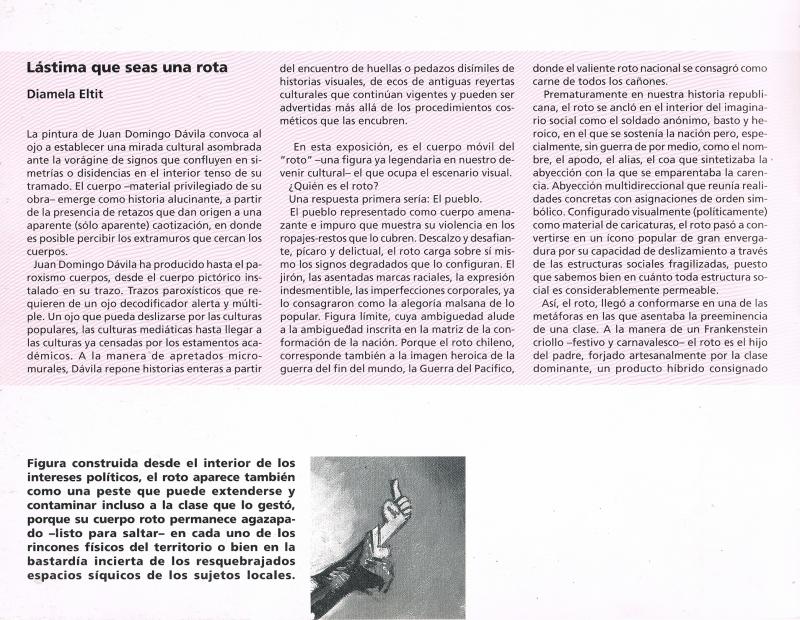In “Cuerpo sin alma” (Body Without Soul) the theorist and cultural critic Nelly Richard (b. 1948) discusses “Fábula de la pintura chilena,” the exhibition of works by the painter Juan Domingo Dávila (b. 1946) at Galería Sur (Santiago, Chile, 1983). The title of the essay is a reference to a phrase that Dávila wrote: “Painting has no inner life.” In fact, this approach to the discipline contradicts the prevailing view in art circles at that time (the 1970s and 1980s), which held that artworks reflected artistic subjectivity combined with transcendent and humanist values. [See, in the ICAA Digital Archive, both “La disputa de la cita bíblica” by Justo Pastor Mellado and “La regresión de la situación cultural” written by the painter, texts that were included in this exhibition.]
Shortly after the Chilean coup d’état, Dávila moved to Melbourne, Australia, in 1974, but always stayed in touch with people back home, most notably in the case of his work with the art theorist and cultural critic Nelly Richard. La cita amorosa (Love in Quotes, 1985) is a book that records the pair’s critical theoretical conversations about his work, which Richard described as complex and destabilizing since it relies on painting at a time when experimental “dematerialized” practices dominated the critical scene. Dávila was a member of what Richard called the Escena de Avanzada, a group of artists who were producing counter-institutional art during the military dictatorship in Chile (1973–90), trying to stimulate critical awareness and promote a commitment to resistance. These art practices prioritized the use of language in an attempt to challenge the dominant cultural discourse.
[On the subject of Richard’s reading of painting in Margins and Institutions. Art in Chile since 1973 (1986), see “Return to the pleasurable” (doc. no. 743686); for other interpretations of Dávila’s work, see “Lástima que seas una rota” (doc. no. 731868) by Diamela Eltit and “Identidad y escatología” (doc. no. 738654) by Carlos Pérez Villalobos.]


